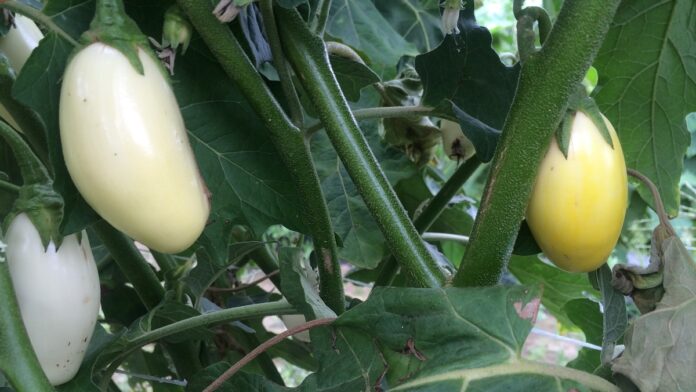Garden eggs are a very popular vegetable in Ghana, used in the preparation of soups and stews. So is garden egg production, a popular occupation in certain parts of the country.
What is your motivation or purpose for going into garden eggs production?Eggplant (Solanum melongena) or aubergine is a species of nightshade grown for its edible fruit. Eggplant is the common name in North America, Australia and New Zealand. However, in British English, it is aubergine, and in South Asia and South Africa, it is brinjal. (Wikipedia)
Botanical Name
Solanum melongena (L)
Suitable varieties
Long purple, Black beauty, Florida market, Ntrowa pa, Ojwanshua, Baby aubergines (Ravaya).
Climatic requirements
Garden eggs prefer relatively high day (320C) and night (210C) temperatures, thus require warm temperatures for optimum growth and development.
Read also: Climate Change Indicators And How Climate Change Is Affecting The People.
Source of planting material
Garden eggs production like other vegetable production, requires good seeds. Buy certified seeds from reputable seed companies.
Site selection
Garden eggs grow in well-drained soils with high organic matter content. The farm should be close to a reliable source of water supply for irrigation.
Read also: Complete Guide to Tomato Production in Ghana
Land preparation
Thorough land preparation is important in garden eggs production in enhancing early crop establishment and adequate weed control. Moreso, garden eggs respond very positively to organic matter, therefore, incorporate 30 tons/ha of decomposed farm-yard manure into the soil at least a fortnight before planting.
Read also: A Guide for the Practice of Conservation Agriculture at the Smallholder Farmer Level
Propagation of garden eggs
Nurse seeds in tray or seedbed. Prick out seedlings in seed trays into larger boxes at 2 leaf stage and transplant to the field at 5 leaf stage. Additionally, apply liquid manure (20kg-25kg cattle/poultry manure in 200L water) or solution of 6-10g per litre of compound fertilizer high in phosphorus (15-15-15/20-20-0 NPK), at 75ml (1 milk tin) per plant to the base of leaves of seedlings are pale. Alternatively, the already prepared seedling nutrient such as MAP may be applied to boost root growth.
Planting
Plant seedlings, preferably late afternoon at a square spacing of 90cmx90cm during the major wet season and 90cmx60cm in the minor season.
Seed rate: 350g to 500g per ha.
Nutrient requirements
207kg/ha of N, 46kg/ha of P2O5, and 340 kg/ha of K20.
Read also: Essential Plant Nutrients Deficiency and Toxicity Symptoms
Fertilizer application
Use soil analysis as a guide for fertilizer application. A general recommendation is a 2-3 split application of 250kg to 400kg /ha (a total of 23g/plant) of 15-15-15 NPK compound fertilizer. Side dress at 4,8,12 and 16 weeks after planting and after each harvest apply 5g/plant of Potassium Nitrate (400g/ha).
Read also: Why is Organic Fertilizer better?
Weed control
Mulch and hoe regularly to reduce weeds incidence.
Read also: Basic Principles of Weeds Control and Integrated Weed Management (IWM)
Pest and Disease Control
Pests: Eggplant Skeletonizer (Selepa docilis), Fruit borer (Leucinodes orbonalis), Pyralid Moth larva(Euzophra villora), thrips sp. and spider mites. These pests can be controlled by routine sprays of recommended insecticides.
Diseases: Fruit Rot (Phytophthora parasitica) and Bacterial Wilt (Pseudomonas solanacearum). Control by removing diseased plants, practice crop rotation, use of resistant cultivars, and apply recommended pesticides.
Read also: Managing Crop Pests with Integrated Pest Management (IPM)
Harvesting
Garden eggs usually start to bear about 2 months after transplanting and may continue to bear for 3 months or more. Harvest the fruit twice weekly while they are relatively young. Fruits must have shiny skin and attractive colour. Moreover, during harvesting, cut the fruit from the branches with about 5cm stalk and calyx attached.
Yield
A yield of 15-40 tons/ha can be obtained depending on the variety and application of good agricultural practices.
Read also: 7 Tips on Profitable Farming with Good Records Keeping
Packaging
Fruits must be graded and packed into plastic baskets.
Reference: Garden Eggs Production (mofa.gov.gh)


